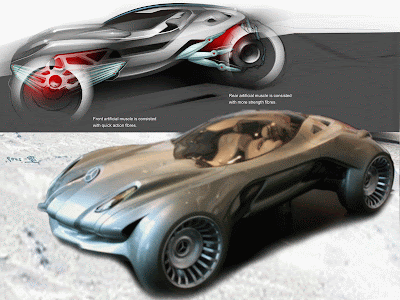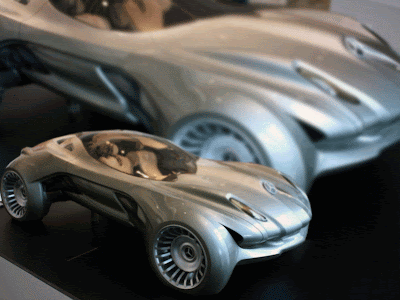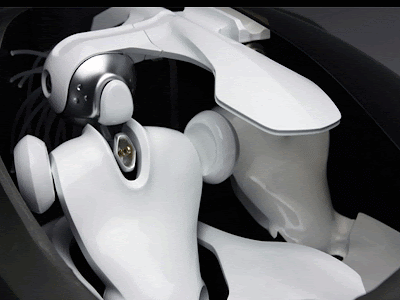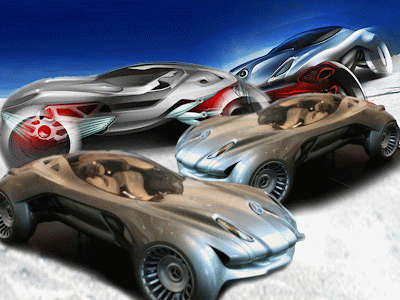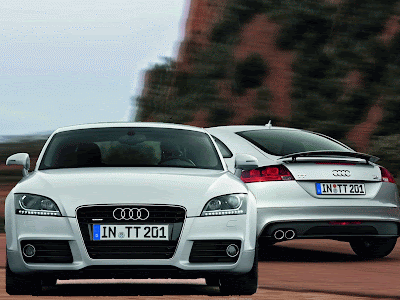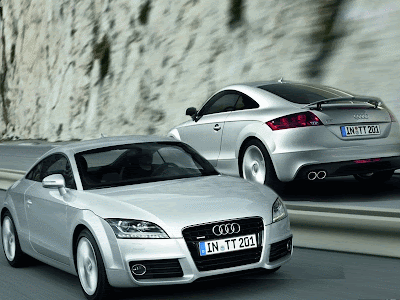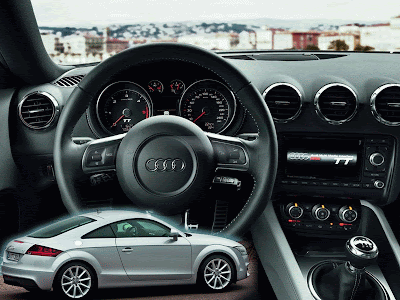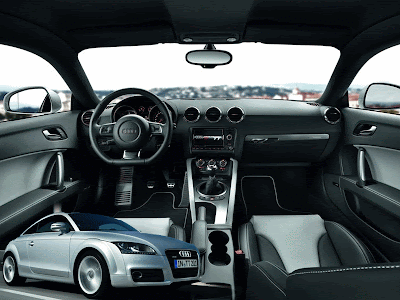|
|---|
Mercedes Supercar C.S.V Concept With BCI System
The Mercedes Benz Cyborg Sensation Vehicle, or C.S.V., is a concept car imagined by Chinese designer Derek Chik Kin Ng. The C.S.V. is an off-road capable, two-seater supercar, Inspired by the Mercedes F400 concept, designed back in 2001, is targeted to young adventurous professionals in 2040.
Mercedes Supercar C.S.V Concept
Its pretty obvious, (thanks Captain Oblivious) what the core concept of this vehicle is just by name. Technology and organics are bound to merge sooner or later. Imagine driving just by thinking. When you sit in the drivers seat, your though patterns are sent to the vehicle, thus becoming an extension of your body. Theres no need for analog controls.
Mercedes Supercar C.S.V Concept
Mercedes F400 concept has served as the inspiration when creating this concept car of the future. It foreshadows a fully integrated driver interface, providing “driving…by thinking”.
Mercedes Supercar C.S.V Concept
The interesting part about this Mercedes Benz concept is that it has no steering wheel, no pedals, but this vehicle can be controlled with the power of mind instead. It uses a system named Brain Computer Interface (BCI), which creates a connection between the car and its driver, through a specially-designed helmet.
Mercedes Supercar C.S.V Concept
This way, the driver’s brain impulses are gathered by the helmet and transferred to the car, which responds appropriately. Although this principle may sound plausible in the future, its implementation on cars, could prove to be quite a difficult task.
Mercedes Supercar C.S.V Concept
The implications for such technologies means someday well know how to interpret, map out, and respond to human neural patterns. If you can put that thought aside for a second, lets focus on the design.
Mercedes Supercar C.S.V Concept
Theres a lot of F400 in there but the designer wanted to give the vehicle an organic flavor, hence the muscle fibers flanking each side, neatly tucking into a hidden skeletal system. The result is a design that takes Mercedes Benz DNA and evolves it into an organic object mimicking its pilot.
Mercedes Supercar C.S.V Concept
Labels:
Concept Car,
Mercedes,
Sports Car,
Super Cars
2011 Audi Sports Car TT Coupe Roadster
Dynamic design, enthralling performance and exemplary efficiency - the Audi TT Coupe and the TT Roadster are now more attractive than ever. The design of the lightweight bodies made primarily of aluminum and the interior have been revised with great attention to detail, while new technologies lower the fuel consumption of the compact sports car. New to the lineup is a powerful and highly efficient four cylinder: The 2.0 TFSI develops 155 kW (211 hp), but is content with an average fuel consumption of just 6.6 liters per 100 kilometers (35.64 US mpg).
2011 Audi TT Coupe and Roadster
The Audi TT Coupe and Roadster models enter the 2011 model year with some modest exterior styling changes, a revised interior and the introduction of the firm's new 2.0-liter TFSI gasoline engine with 211 ponies on the entry-level versions. The new 2.0 TFSI delivers 211HP and 258 lb-ft, or 11-horsepower and 51 lb-ft of torque more than its 2.0-liter predecessor. With the six-speed manual, the two-liter engine accelerates the Coupe from zero to 100 km/h (62mph) in 6.1 seconds on its way to a top speed of 245 km/h or 152mph.
The upgrades to the Audi TT Coupe and the TT Roadster have added two centimeters (0.79 in) to both cars, which now measure 4,187 millimeters (13.74 ft) in length. The width of 1,842 millimeters (6.04 ft) and the height of 1,352 millimeters (4.44 ft) and 1,357 millimeters (4.45 ft) for the Coupe and Roadster, respectively, remain unchanged. The wheelbase measures 2,468 millimeters (8.10 ft). Four new metallic colors have been added to the TT color range: Scuba Blue, Oolong Gray, Volcano Red and Dakota Gray. Daytona Gray, pearl effect is also available with the S line package.
The Audi TT 1.8 TFSI weighs a mere 1,240 kg (2,733.73 lb), a good 100 kilograms (220.46 lbs) less than its closest competitor. The body of the Coupés weighs only 206 kilograms (454.15 lb), which breaks down to 140 kilograms (308.65 lb) of aluminum (68 percent) and 66 kilograms (145.51 lb) of steel (32 percent). The specific reinforcements in the TT Roadster - steel bulkhead, strongly ribbed sills, A-pillar and windshield frame - result in a 58 to 42 percent split of the two materials.
The designers have added additional gloss to the fine interior. New aluminum-look applications shine on the steering wheel, the center console and in the door liner. Elegant accents are provided by rings, frames and strips in high-gloss black. The aluminum strip above the glove box door is now brushed gray. There are three new interior colors from which to choose - nougat brown, titanium gray and garnet red. The leather seat covers are specially treated to reduce thermal heating by as much as 20 degrees Celsius (68° F) when the Audi TT is parked in the sun.
The Audi TT Coupe and the TT Roadster are sports cars with a high degree of everyday utility. The backs of both rear seats fold down in the 2+2-seater Coupé, expanding the trunk space beneath the long lid from 292 to 700 liters (10.31 - 24.72 cubic ft). The Roadster, which offers 250 liters (8.83 cubic ft) of storage space whether the top is up or down, can also be supplied with the option of a load-through facility.
The S line sport package features a black interior with many fine details in such places as the steering wheel, the seat covers and the applications. 18-inch wheels and body lowered by 10 millimeters (0.39 in) make the handling even more dynamic.
The updated Audi TT Coupe and the TT Roadster will debut on the German market in the summer of 2010 with only minimal changes in price. The 1.8 TFSI will be available from €30,200.
Labels:
2011,
Audi,
Sports Car
Subscribe to:
Posts (Atom)








